Lawn care for winter: how to look after grass throughout the colder months
These tips on lawn care for winter will help keep your turf healthy despite inclement weather
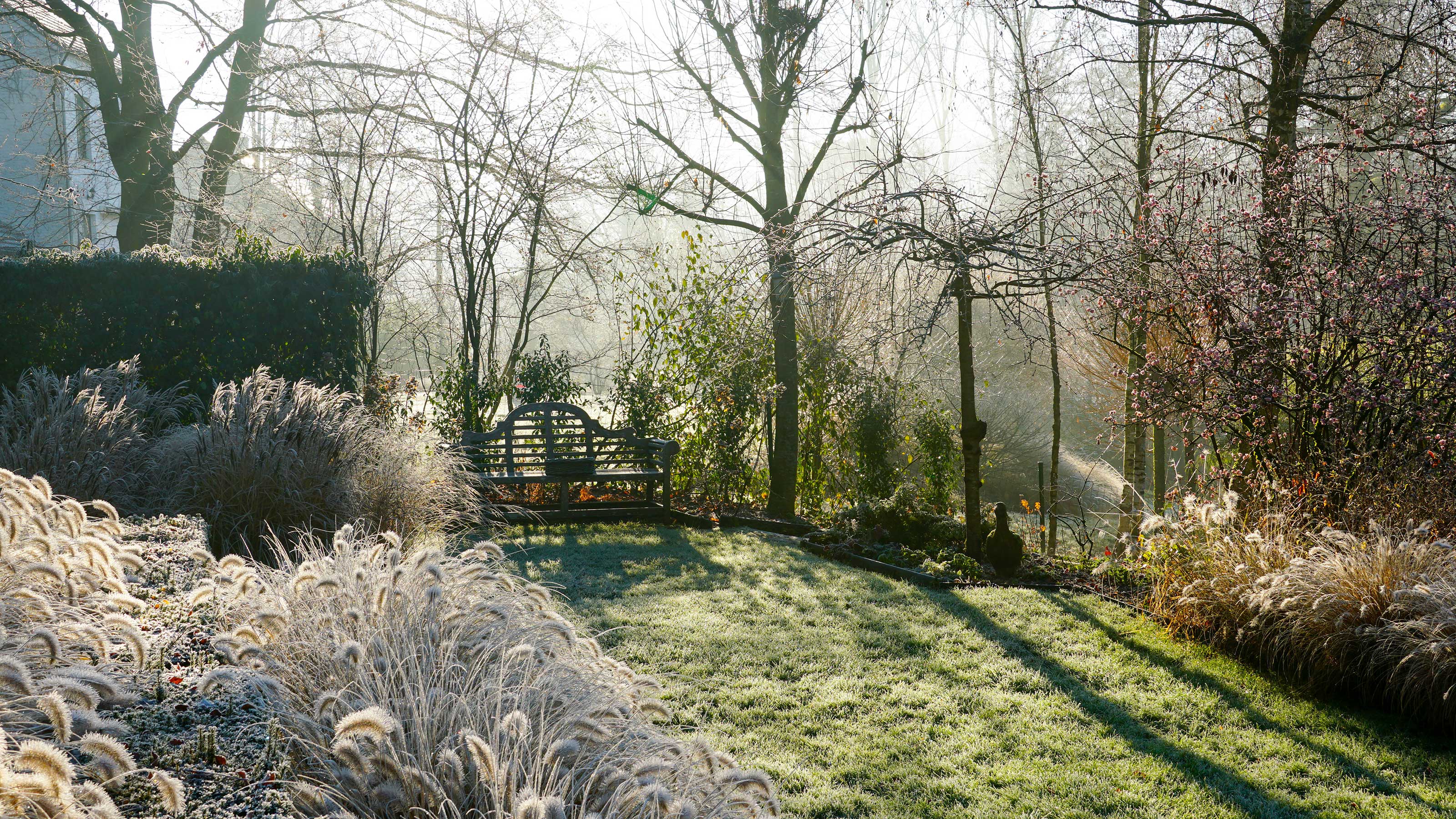

Do you need some advice on the best approach to lawn care for winter? We're here to help.
Seasonal lawn care is important all year round, and the coldest months are no exception. It's true that growth tends to slow down, meaning there's less (if any) mowing involved. However, there are other things to do to keep your lawn in tip-top condition.
With help from the experts, we've rounded up an easy guide to ensure your lawn looks lush, green and glorious when warmer weather returns.
6 top tips for lawn care for winter
Follow these simple tips on lawn care for winter and you can help protect your grass throughout the season.
1. Avoid walking on your lawn
'The greatest difficulty with winter lawn care is that while there are jobs that you can do, your green carpet won’t take kindly to being walked on,' says Ruth Hayes, a gardening expert from Amateur Gardening.
Walking on the grass when it's wet can cause muddy patches where moss and weeds can take root. And, walking on a frosted lawn can damage the grass.
'Where possible, walk on the lawn as little as possible and only on days when the grass has had the chance to dry and conditions are mild,' she suggests.
If you need to cross your lawn regularly to get around your garden, consider laying stepping stones to get from A to B to help protect it. The RHS explains how you can lay them at a low-enough level so that they won't interfere with mowing.
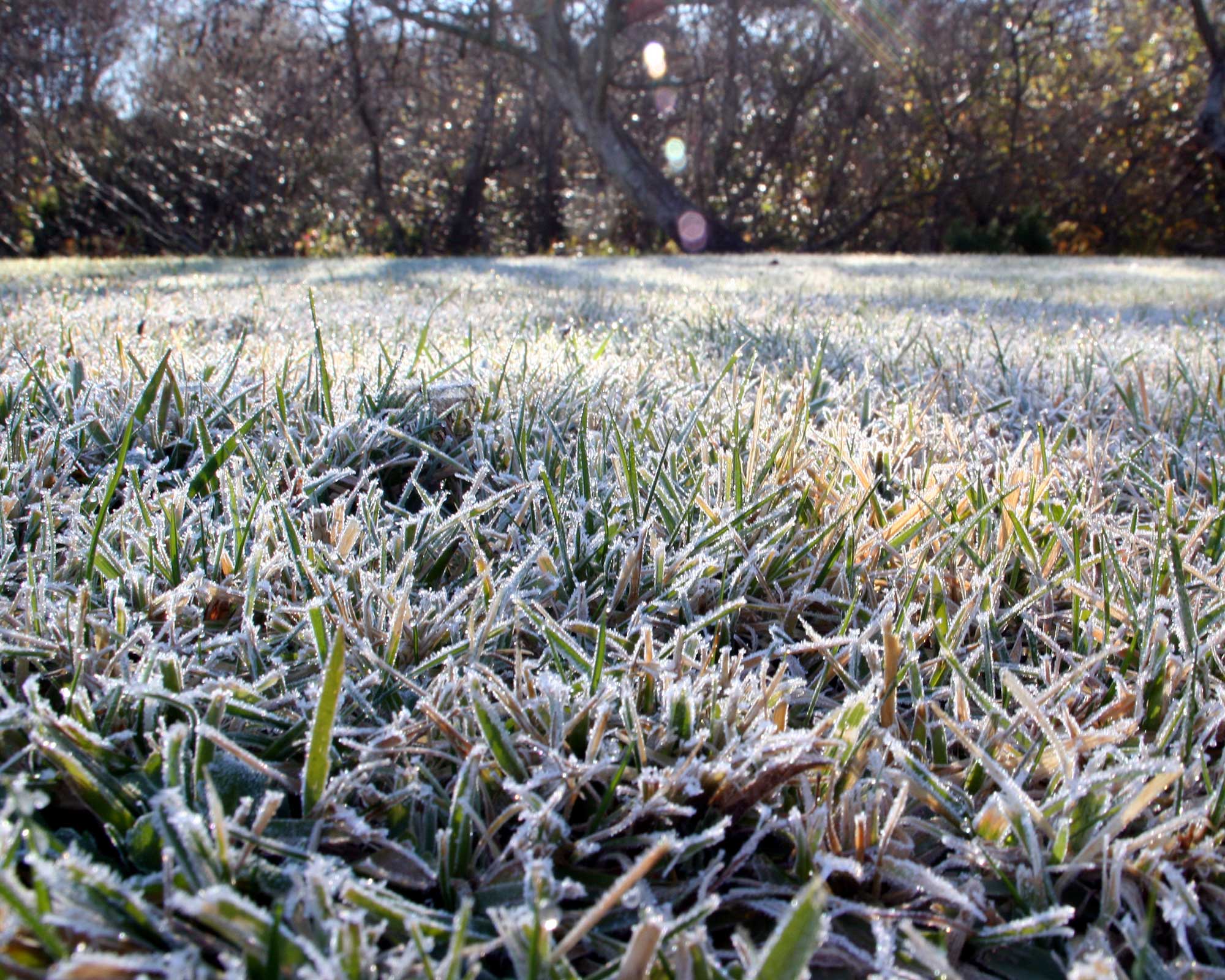
Walking on a frosty lawn can damage it
2. Clear up fallen debris
Carlos Real, a lawn care expert and the Managing Director of TotalLawn, comments on the importance of keeping your lawn clear over winter.
Whether it’s leaves, heavy branches or gardening equipment, you want to remove it quickly before the cold sets in, he says. 'If you leave anything heavy on your lawn over winter, you are running the risk of your soil compacting, which puts it at risk of waterlogging and developing diseases.'
Clearing up leaves will also help your lawn get the air and light it needs for healthy growth, he adds. Amanda Kincaid of STIGA agrees: 'Leaves on the lawn aren’t just untidy and they don’t just create slow-growing patches of grass,' she says. 'They can actually kill your grass, by encouraging our worst known lawn disease, fusarium. Fusarium is a fungal disease that comes to the fore in winter, and fallen leaves can create a damp, warm environment that is perfect for it to flourish. Good healthy lawn care practice is the key to discouraging this disease, but the most important thing you can do is to remove those fallen leaves.
'A good leaf blower is just the ticket and you can even buy blowers that also suck and shred unwanted leaves. Battery options are quieter and cleaner for the environment.' Amazon has plenty of leaf blowers to choose from, but if you're looking for a design that works as a blower and vacuum in one, the Greenworks 40V Brushless Cordless Blower/Vacuum from Amazon is worth a look.
On the topic of fallen leaves, it can be beneficial to give any trees on your lawn a trim, too, particularly if they have low-hanging branches. Ruth, for instance, prunes back her weeping ornamental pear tree on a mild winter day, then aerates the grass around it after clearing away the last of the leaves. This way, more light and air can get through the branches to the lawn, again, reducing the risk of soil compaction and damp and fungal problems.
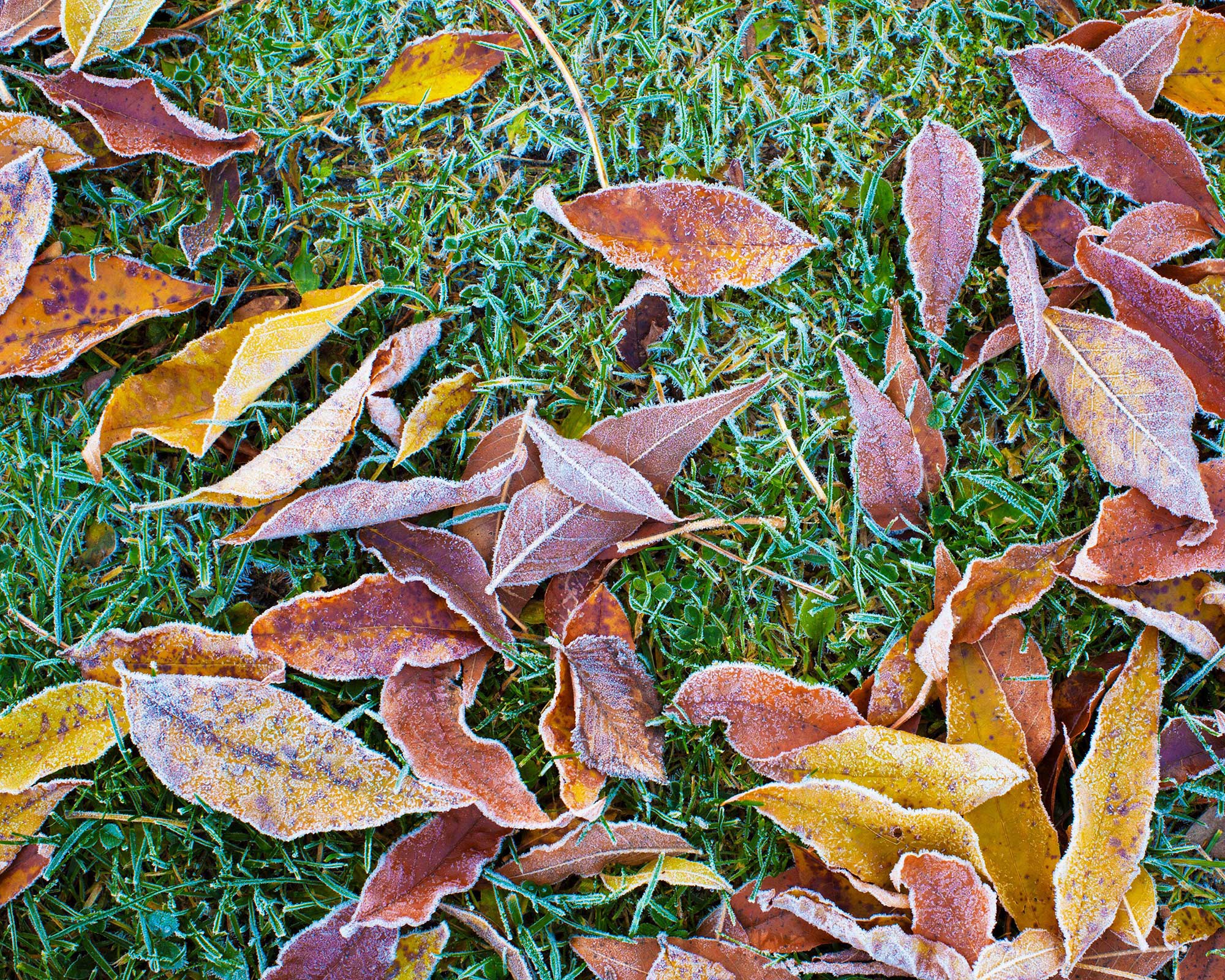
Remove fallen leaves to reduce the risks of fungal diseases developing on your lawn
3. Be mindful of mowing
Once winter comes along, many people think that mowing a lawn isn't necessary at all – but this isn't always the case.
'Mowing your lawn during winter can be a minefield,' says David Hedges Gower, the Chairman of the Lawn Association. 'What should we do? What shouldn’t we do?' And when is the last time to mow your lawn before winter?
'A healthy lawn that is draining well will naturally be warmer and able to take advantage of warmer weather, so if it keeps on growing, then don’t stop mowing,' he says. He explains that cutting the lawn at a higher-than-normal level in winter not only helps the plant to continue to grow, but also means it can hold less moisture in the leaf, which is important for disease control. 'A good tip is to remove that "morning dew" with a battery blower or even a broom and your lawn will be dry and ready to cut,' he adds.
Ruth shares her tips for winter mowing, too. She explains that grass will continue to grow in temperatures of 41˚F/5˚C and higher – so you may not be able to retire your lawn mower for the whole winter.
'Only cut the grass on dry days when there is no frost, nor heavy frost forecast,' she says. In terms of how short you should cut it, she agrees with David. 'Raise the blades to their highest setting, so grass is just trimmed and the soil underneath isn’t damaged.'
Ruth also suggests cleaning your mower well after use and getting it serviced if there is time.
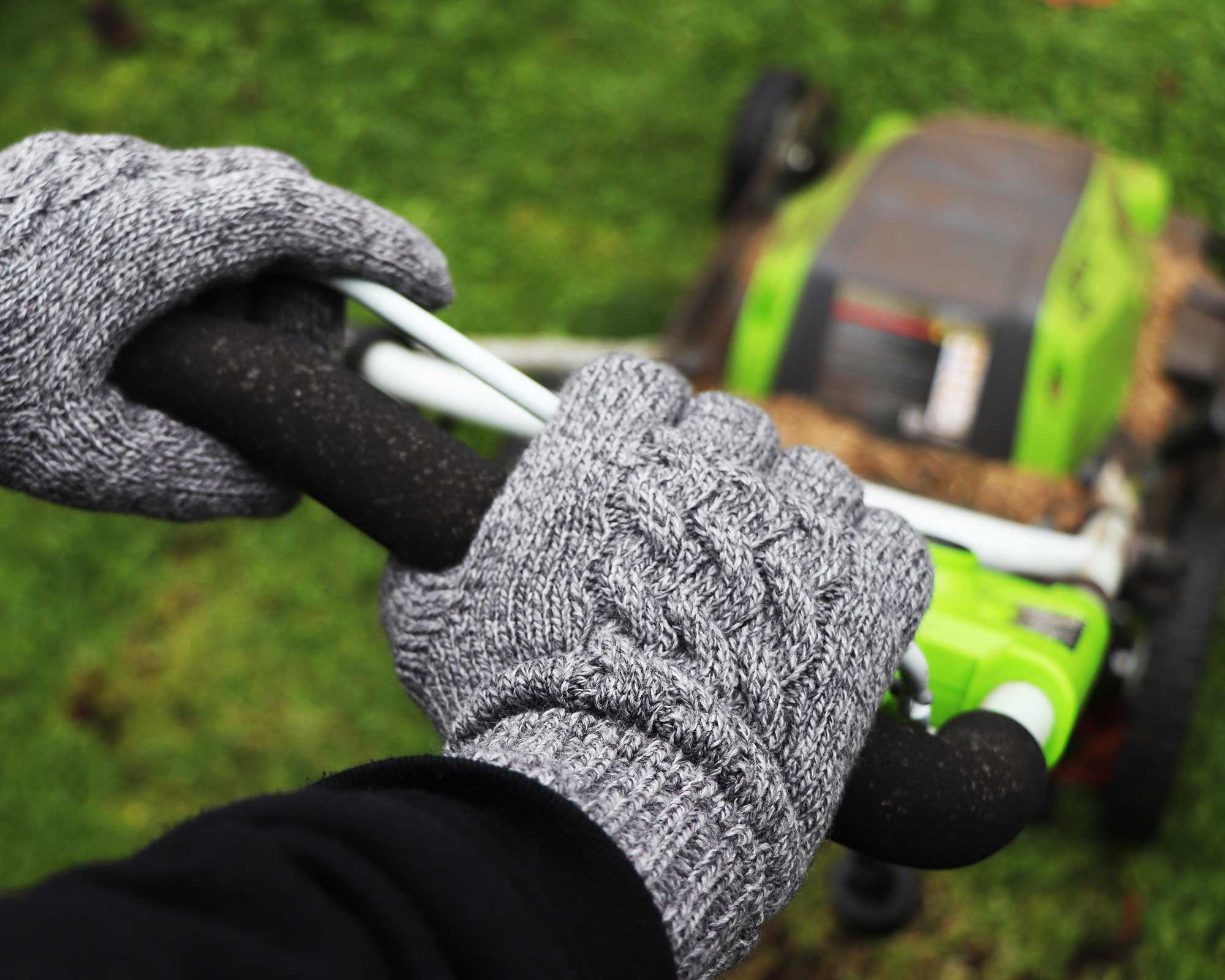
You can still mow on a high setting if your lawn is still growing
4. Watch out for waterlogging
‘Areas that get a lot of traffic are likely to be compacted underneath, causing muddy spots and soggy, waterlogged soil,' says Ruth. Waterlogged soil can also lead to the development of algae and slime mold.
As well as laying a stepping stone path, as mentioned above, you can help remedy the problem by aerating the lawn with a border fork (we like the look of this Spear & Jackson one from Amazon). Choose a dry, mild day, and simply plunge the fork into the ground a couple of inches (5cm) deep, and give it a wiggle, Ruth advises. 'This will open up the soil, letting air in around the grass roots and helping water soak away.'
If the problem is more severe, you may need to look into more intensive garden drainage solutions.

Aerate your lawn to reduce waterlogging
5. Keep an eye out for winter wildlife
Don't forget about pests when planning your lawn care for winter.
Worm castings are a common problem this season – unsightly coils of soil and mucus excreted by worms that appear on the surface of lawns. If trodden on, they can become a breeding ground for weeds and moss, Ruth warns. 'Avoid walking on them and once they have dried, sweep them away with a brush or broom or the upturned head of a rake.
'Even more of a problem are molehills, which have been popping up in our lawn and flower beds in late winter and early spring,' she continues. They are incredibly annoying but luckily, there are a few ways to get rid of moles in the garden. Ruth uses Defenders’ Mole Scatter Granules [available on Amazon] and is also trying out a solar-powered sonic repellent.
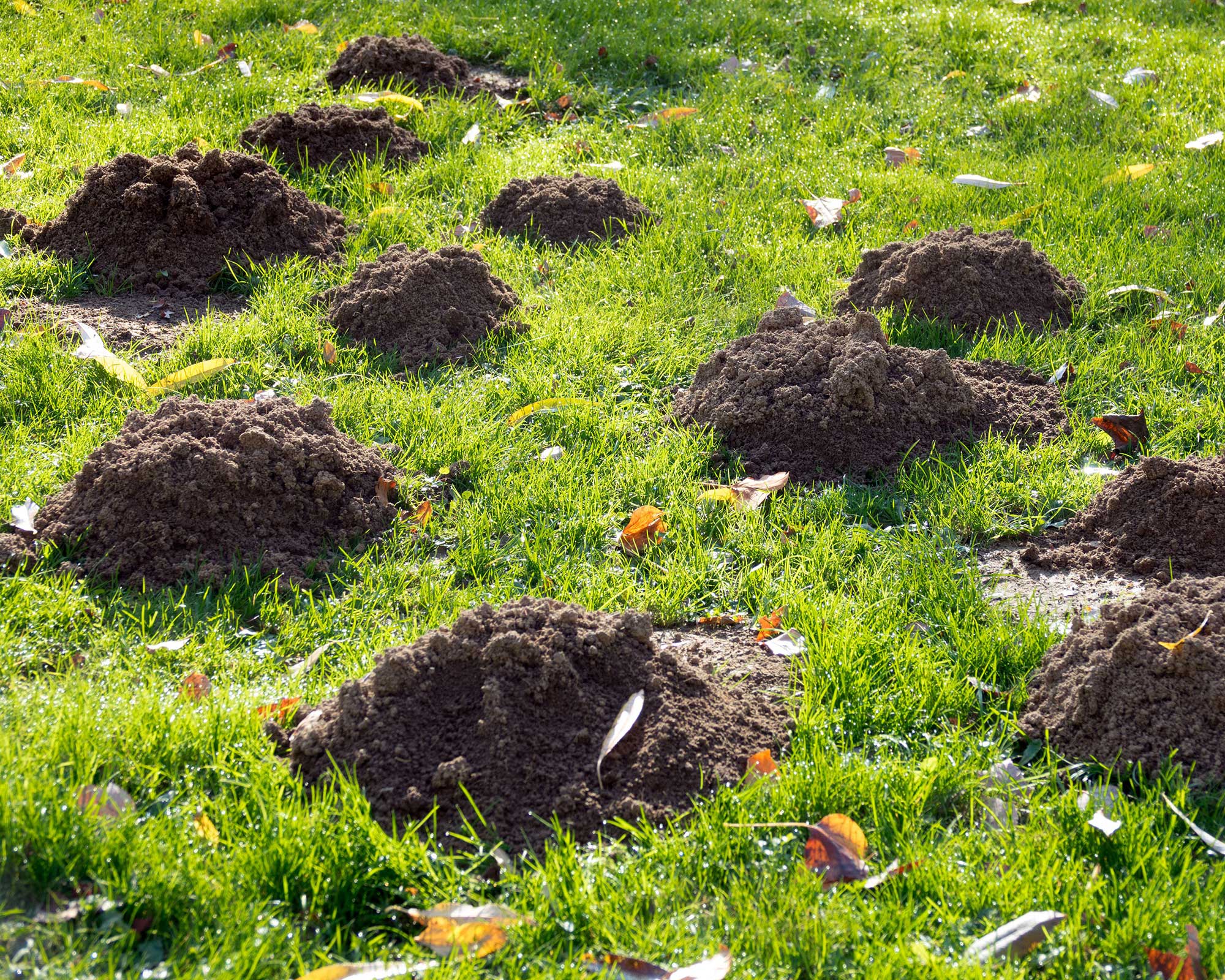
Molehills are unsightly and a common winter problem
6. Repair lawn patches with new turf
Towards the end of winter, when temperatures are milder and the soil is less likely to be wet or frosty, you can carry out any lawn maintenance work that needs doing.
The RHS says that you can lay turf at this time (whether you're making a new grassy area or repairing lawn patches). But, it's best to work from planks, they add. That way, you'll be less likely to compact the soil.
Now is also a good time to repair any bumps or hollows in your lawn by peeling back sections and either flattening the soil or adding loam to bulk it up, they add.

The garden was always a big part of Holly's life growing up, as was the surrounding New Forest where she lived. Her appreciation for the great outdoors has only grown since then. She's been an allotment keeper, a professional gardener, and a botanical illustrator – plants are her passion.
